Heart Attack and its Causes
Heart attack and its causes
A heart attack is a very serious consequence of coronary heart disease (CHD). This can cause parts of the heart muscle to die. To prevent damage to the heart muscle, it is important to know how a heart attack occurs and how it can be treated.

What happens during a heart attack?
During a heart attack, the oxygen supply to parts of the heart muscle is interrupted. This causes the region that is no longer supplied with oxygen to die after a short time. A heart attack can be the result of plaque rupture in patients with coronary heart disease.
Plaques are deposits of fat and calcium that build up over time on the inner walls of the coronary arteries. The brittle material can become detached when small localised areas of the plaque rupture and inflammation builds up. A blood clot first forms at the site where the plaque has detached. This clot, also known as a thrombus, is then swept away by the blood and lodges in the vessels supplying the heart muscle, blocking them off.
Physicians also refer to a heart attack as a myocardial infarction – "myocardium" is Latin for the heart muscle.
Causes of a heart attack
Whether a heart attack occurs is influenced by various risk factors. Some, such as a genetic predisposition, cannot be influenced, but others can.
Diseases such as poor kidney function or diabetes increase the risk of a heart attack. Therefore, you should take medication for symptoms such as high blood pressure or high blood sugar regularly, as recommended by your doctor.
A heart-healthy lifestyle significantly reduces your risk. The most important factor is to stop smoking.
Furthermore, a balanced diet with fibre and minimal animal fats is beneficial.
A heart-healthy lifestyle includes regular exercise. There are exercise groups specifically for patients with heart disease. In addition to a specially-trained coach, a physician is always present.

What are the different types of heart attacks?
The coronary arteries supply different areas of the heart muscle. Different parts of the heart are at risk depending on which coronary artery the clot originates in.
Physicians can use a so-called ECG, short for electrocardiogram, to determine which part of the heart muscle is affected and thus, which coronary vessel is occluded. The ECG measures electrical currents produced by the heart that are necessary for normal heart activity. Deviations in these currents give clues to the location of the heart attack.
Reacting quickly is extremely important in the event of a heart attack
The symptoms of a heart attack are often so severe that patients can no longer act on their own. It is therefore all the more important that you not only inform yourself about emergency measures by consulting with a physician , but also pass this knowledge on to friends and relatives.
Call the emergency services
If a heart attack is suspected, emergency services should be alerted immediately. Describe your symptoms to the emergency services, tell them where you are located and answer any queries they may have. Then take off constricting clothing and sit down. Wait for the ambulance to arrive. An ambulance will arrive at your home within a few minutes.
The golden hour
If your physician has prescribed a nitroglycerin spray, you should use it according to the recommendations. When sprayed under the tongue, this spray reduces the strain on the heart. Acting quickly is crucial, as a heart attack is best treated within the first hour. This is why doctors refer to the "golden hour" after a heart attack.
NPS-2596


